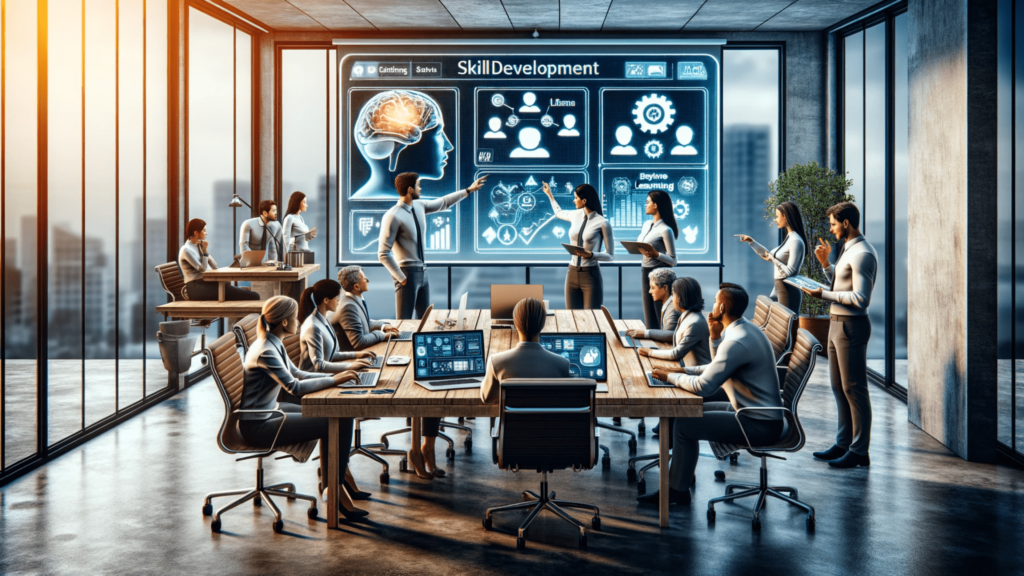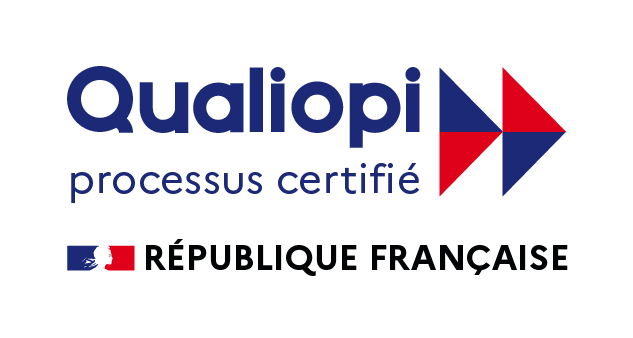In today’s fast-moving, dynamic business environment, HR and management development managers are faced with unprecedented challenges. Between the rise of Generation Zgeneration, the urgent need to develop emotional and adaptive skills to boost performance, and the integration of artificial intelligence, it is crucial to rely on innovative approaches. Among these, neuroscience is proving to be an essential tool for effectively meeting these challenges. Discover how they are transforming HR practices practices and talent development development.
PREAMBLE: WHAT EXACTLY IS NEUROSCIENCE?
Neuroscience, the cognitive sciences as a whole, explores the mysteries of our brains to decipher how we learn, feel, act, react or interact. This multi-disciplinary field encompasses physiology, biology (such as the analysis of brain waves and hormonal variations) and psychology to establish a link between our biology and our behavior. Advances in neuroscience offer a revolutionary perspective, enabling us to advanced personalization in a variety of fields, including preventive preventive healthcare and training.
A concrete example of the application of neuroscience in education is illustrated by the work of Howard-Jones (2014)¹, who shows that understanding how the brain works can help optimize learning strategies. The personalizing learningmade possible by understanding individual neurological processes, has shown significant improvements in information retention and motivation. A study by Sigman et al. (2014)² also reveals that teaching approaches adapted to students’ cognitive profiles can increase learning efficiency by up to learning efficiency by up to 20%.
These neuroscientific insights offer invaluable perspectives for training managers and management development directorsby highlighting the importance of adapting and customizing training programs to meet the unique needs of each individual employee. By using neuroscientific data and analysis, organizations can not only improve the effectiveness of training programs, but also foster an environment where every employee can realize their full potential.
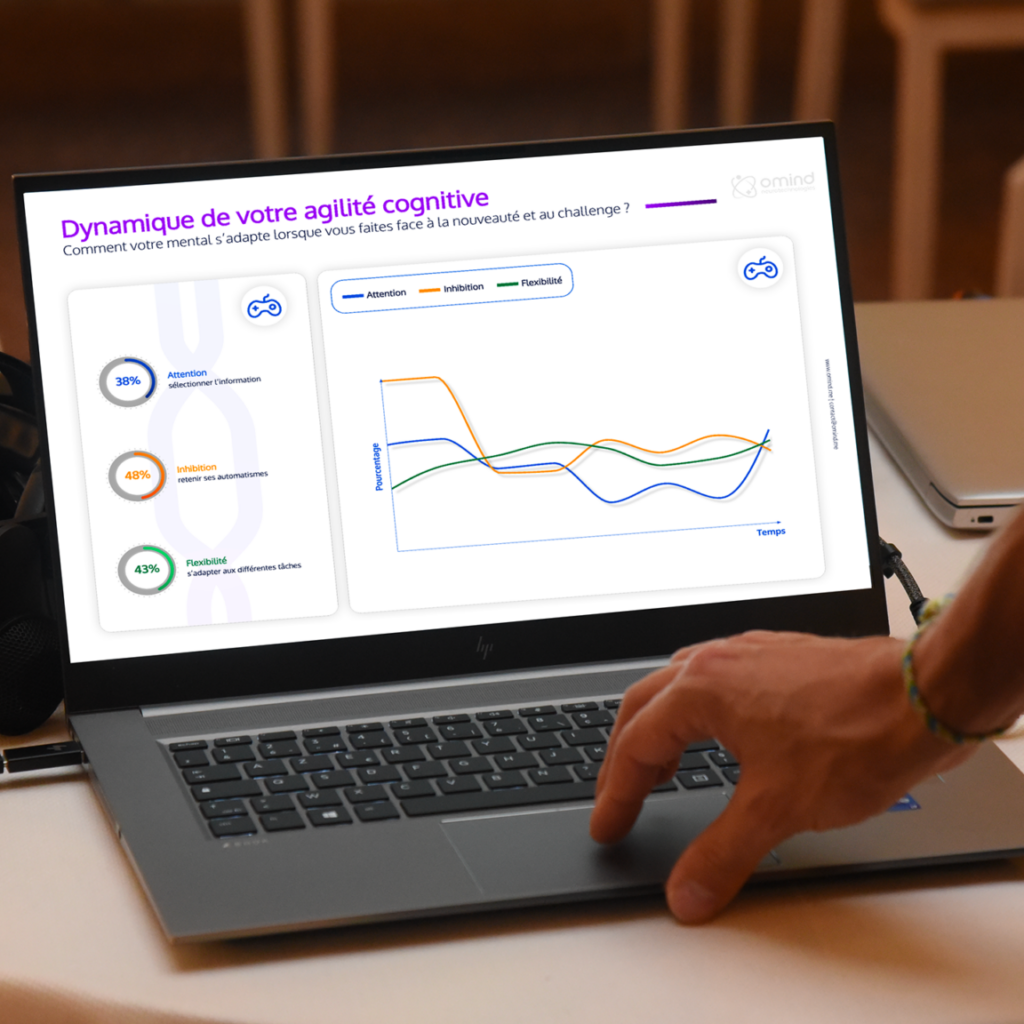
1. MORE APPLIED AND IMPACTFUL TRAINING
Neuroscience offers valuable insights into brain function and learning. They enable us to design training programs that maximize information retention and motivation.
Two teaching examples for pedagogical engineering:
1) The principles of neuroplasticity suggest that repetition and practical application strengthen neuronal connections, making learning more durable. Studies show that active engagement in learning tasks can increase retention increase retention by up to 50%³.. A compelling case for active and experiential pedagogies!
2) Gamification: the reward system manages the secretion of dopamine, the motivating hormone also involved in learning. It’s therefore advisable to incorporate content that triggers “dopamine bursts” into your training modules, at the start of a learning module, such as an inspiring video, a nod to familiar content or an interaction that challenges the learner⁴. Caution! A use of gamification that is not in tune with the training content can become a distractor.
Omind Neurotechnologies has identified 7 teaching practices in terms of their research-validated impact. Educational managers, training engineers and in-house trainers alike: it’s time to delve a little deeper into this extremely rich material (over half a million scientific publications since 2000), to sort out and apply the best practices validated by research in your day-to-day professional training.
2. LEADERSHIP DEVELOPMENT BASED ON NEW EMOTIONAL AND ADAPTIVE SKILLS
The ability to manage change and demonstrate emotional intelligence has become paramount. Neuroscience sheds light on emotional mechanisms and stress management, enabling the development of leadership programs that reinforce resilience, empathy and positive adaptation to uncertainty. Research indicates that training based on emotional awareness can improve transformational leadership by 40%⁵.
Gone are the days of fixed postures, replaced by open leadership frameworks that enable all these dimensions to be worked on holistically. Derived from neuroscience research and translated from the World Health Organization’s model of psychosocial skills, the Omind model articulates 12 competencies to manage oneself in an aligned way, adapt to a fast-changing world and develop authentic relationships thanks to emotional intelligence.
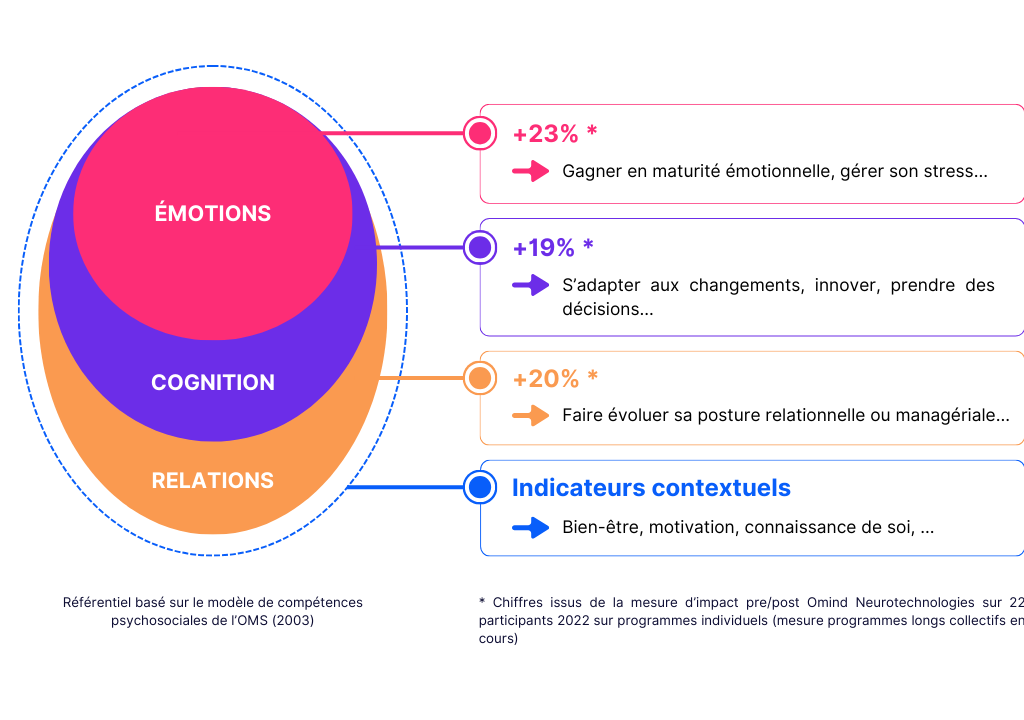
Spoiler alert: and if you also use technology and virtual reality by calling on Omind Neurotechnologies for group bootcamps: your leaders will love it!
3. UNDERSTANDING THE EXPECTATIONS OF GENERATION Z
To meet the specific expectations of Generation Z, HR can draw on neuroscience to better understand their motivations and behaviors. This generation’s emphasis on work/life balance and meaning at work reflects neurological needs for well-being and belonging. Adapting HR policies to meet these needs can reduce turnover by 30% among among young employees⁶.
But that’s not all. Providing talent development solutions for your young employees, but also for their managers, is THE solution to overcoming the generational blockages that are taking hold. With the light of neuroscience, the renewal of managerial practices will be accelerated.
4. CUSTOMIZED DEVELOPMENT TO ADAPT TO IA
With the advent of AI, new managerial skills are needed. Neuroscience can help to identify and develop these skills, such as the ability to work with AI, creativity and critical thinking. One study found that managers who understand the brain workings behind decision-making can increase their team’s efficiency by 20% when when working with AI⁷ tools.
Critical thinking, emotional intelligence, communication, adaptability… These fundamental skills, highlighted by the World Economic Forum’s studies on the “Future of Work”, require a different, much deeper and more personalized approach. Because behind rigid managerial practices lie very different perspectives from one leader to the next. Materialising scientific data to personalize your approaches and coaching is the key not to be missed, finally within reach thanks to neuroscience.
CONCLUSION: HR STRATEGIES AND NEUROSCIENCE
Integrating neuroscience into HR and talent development strategies offers a unique opportunity to to adapt managerial and leadership practices to contemporary challenges. Based on an in-depth understanding of brain function, organizations can design more effective training programs, develop resilient and empathetic leaders, better meet the expectations of new generations and successfully navigate the age of artificial intelligence. Omind Neurotechnologies is positioned as a privileged partner to support training managers and directors of managerial development in this process, by offering solutions based on the latest advances in neuroscience.
Discover Omind's neuroscience-based HR training course
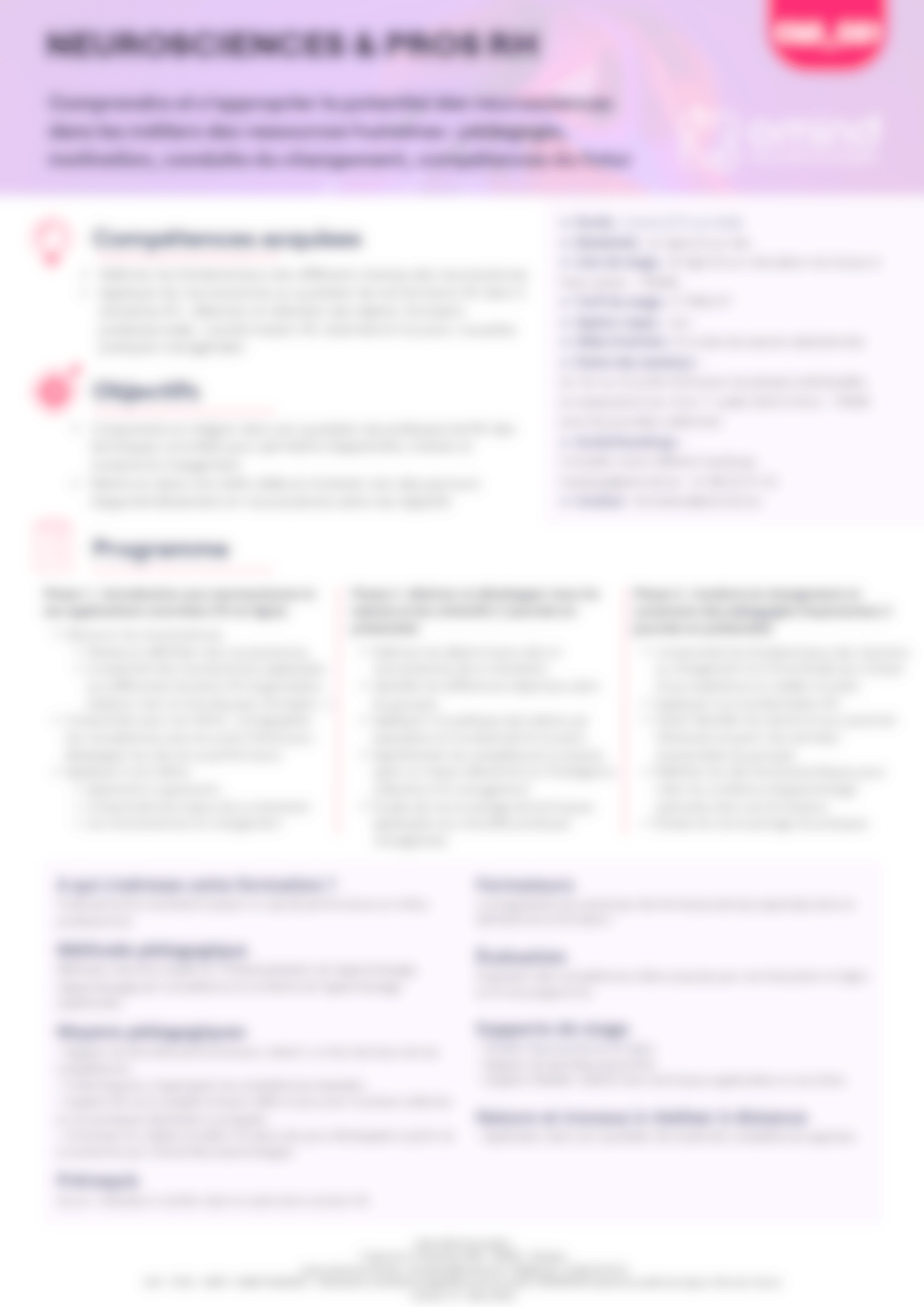
¹ Howard-Jones, P. (2014).
² Sigman, M., Peña, M., Goldin, A. P., & Ribeiro, S. (2014). Neuroscience and education: prime time to build the bridge. Nature Neuroscience, 17(4), 497-502.
³ Smith et al., 2021, Journal of Applied Psychology.
⁴ Mohebi et al., 2019, Nature.
⁵ Johnson, 2019, Neuroscience for Leadership.
⁶ Deloitte, 2023, Global Gen Z and Millennial Survey
⁷ HBR, 2022, “AI and the Future of Work”
